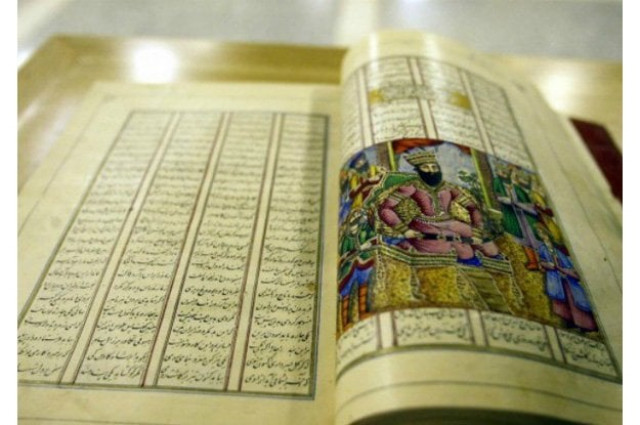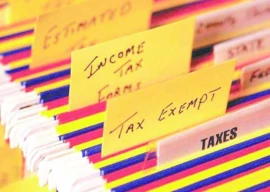
An announcement late last year about enhancing trade between Iran and Khyber-Pakhtunkhwa should be reason enough for the government to rummage through the past and consider giving Persian a legal status. This can help both countries to communicate better, helping economic ties.
Pakistan, Iran agree to enhance cooperation in trade, counter-terrorism
“Trade barriers between K-P and Iran should be lifted as the latter can help the province explore oil resources; this would benefit the entire country," Khyber Pakhtunkhwa Chamber of Commerce and Industry former president Zahid Shinwari told The Express Tribune. “Iran also has a huge plastic industry – we can import articles such as polypropylene pipes, used in infrastructural work.”
Besides oil and plastic, added Shinwari, matchsticks were also exported from K-P to Iran as the province boasted a large industry, a significant amount produced in the provincial capital.
However, barriers on trade between Iran and Pakistan have given rise to informal trade between the countries via Afghanistan – money which does not make its way to the official coffers.
At a provincial level
In a meeting held with former Iranian Consul General in Peshawar Homayoun Amir Khalili in November 2015, Chief Minister Pervez Khattak discussed the prospects of trade between K-P and Iran.
Since the benefits of improved relations are likely to trickle down to those in the field of commerce, traders and businessmen from both regions should be able to communicate readily. And unlike other trade languages such as Mandarin, Persian or Farsi comes more naturally.
Since Pakistan’s national language is rooted to some extent in Persian, the language of Iran, the reintroduction of the foreign language should not be a tedious task. In Peshawar, there are institutes and people who are already working to promote the language and encourage relations between both the regions. However, militancy and poor law and order impede the efforts of these individuals and institutes.
In academia
Professors of Persian at University of Peshawar are working to promote the language, playing up and focusing on its connection with the province so ties to Persian and locals stay intact. They say they were witness to a time when the language was given importance in academics, so they have not lost all hope and are endeavouring to bring it back into the mainstream.
After nuclear deal, Pakistan and Iran seek to increase trade
“K-P has lived through an era when students from different parts of the province, like Bannu, would come to study Persian at the university,” an associate professor at the department, Dr Shafqat Jehan told The Express Tribune. “But the law and order situation does not allow them to commute as easily to pursue their passion,” added Jehan.
In 1980s when Jehan attended school, Persian was compulsory for grades six to eight. She thinks Persian can never be separated from K-P and its people because it is deeply ingrained in two of the languages spoken widely in the province – Urdu and Pashto. “One should know the language of their neighbour.”
Thin scope
Another reason behind the lack of interest in Persian is the lack of scope for those who are fluent in it. However, teachers at UoP have not left any stone unturned; they have held talks with relevant government officials who said they would make the language part of school curriculums starting 2008, but the decision was never implemented.

When asked, former education minister Sardar Hussain Babak said their government — the Awami National Party — formed the Regional Language Authority to make languages such as Hindko and Pashto the medium of teaching in primary and secondary schools. However, he added, the emphasis on English has pushed back regional languages.
Nuclear deal will open up doors of Pakistan, Iran trade: Fatemi
A vanishing history
People from Iran are also interested in keeping their history alive in K-P.
Director General of Khana-e-Farhang Iran in Peshawar Ali Yousafi is also one of those who have not lost hope and wants to play a part in consolidating historical ties between Iran and Pakistan.
Yousafi says there was a time when people wanted to learn Persian because they could go to Iran for jobs.
“In Tehran University there were Pakistanis working in the library since the time of the Shah,” he recalled. “In the south of Iran, like in Abadan or Khorramshahr, Pakistanis were working in commercial businesses like those of refineries,” implying their fluency in the local language.
Many doctors and engineers in Iran were from Pakistan, India and Bangladesh but after the war in Iran in 1979, many returned to their home countries. Yousafi said, “Now in Iran there are sufficient doctors and engineers so the scope has decreased for Pakistanis.”
However, Iran still has its doors open for its neighbours; University of Tehran still has an Urdu department.
Not one to give up hope, Yousafi added, Institute of Management Sciences students are enthusiastic about learning the language as it would help their career mobility. “We have a professor, Ghayoor Hussain, who is well-versed in Persian and teaches at IMS”.
Published in The Express Tribune, January 21st, 2016.












COMMENTS
Comments are moderated and generally will be posted if they are on-topic and not abusive.
For more information, please see our Comments FAQ